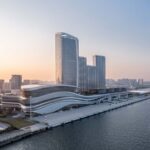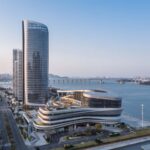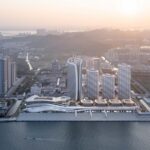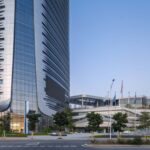
The Nansha International Cruise Terminal Complex, envisioned and designed by Aedas, heralds a new era in maritime infrastructure. Officially inaugurated in November 2019, this state-of-the-art facility represents the pinnacle of modern cruise port design, seamlessly integrating with the metro subway system and setting a new standard for passenger experience.
Strategic Location
Situated at the estuary of the Pearl River Delta, Nansha holds historical significance as the birthplace of the ancient Maritime Silk Road. Today, it serves as a pivotal hub within the Guangdong-Hong Kong-Macao Greater Bay Area economic zone and the Belt and Road Initiative. The terminal’s strategic positioning within the Guangdong Free Trade Zone ensures easy access to nine major cities in the Pearl River Delta and five international airports within a 100-kilometer radius, thus playing a crucial role in regional economic development.
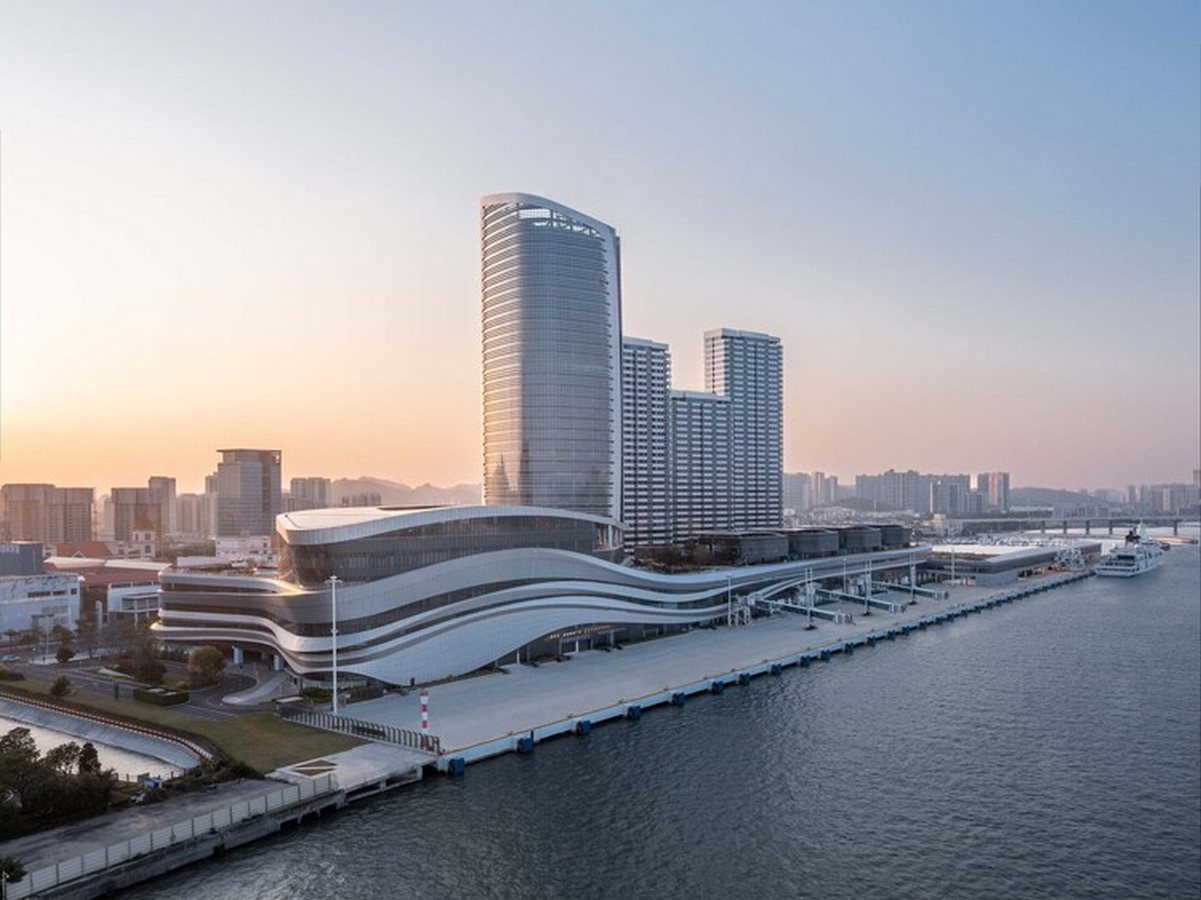
Design Inspiration
Drawing inspiration from the rich maritime heritage of Nansha, the terminal’s design concept mirrors the graceful movements of whales in open waters. The free-flowing forms and non-linear outlines of the building evoke the imagery of these majestic creatures navigating the sea. The terminal’s massing, resembling a whaleboat, symbolizes vitality and motion, with its undulating contours reminiscent of fins.
Functional Efficiency
Spanning six floors, the terminal building is ingeniously designed to optimize functionality and passenger flow. Interconnected arrivals and departure halls minimize walking distances, ensuring seamless circulation for the large volume of passengers. The ground floor and B1 level are dedicated to ground transportation, while a thoughtfully laid-out floor plan disperses passenger flows to prevent congestion. A soaring full-height atrium imbues the space with a sense of openness and vitality, enhancing the passenger experience.

Elevated Amenities
Atop the terminal building lies a verdant rooftop garden accessible via a scenic viewing elevator, offering panoramic views of the ocean. Visitors can also access the scenic promenade from the first-floor commercial street, fostering a sense of community and connectivity while alleviating congestion. The terminal complex comprises four towers housing offices and serviced spaces, with minimalist architectural forms harmonizing with the waterfront landscape.
A Fusion of Urbanism and Ecology
In the words of Leo Liu, Global Design Principal at Aedas, the Nansha International Cruise Terminal Complex transcends its function as a cruise port, embodying a multifaceted development that seamlessly integrates urbanism and ecology. From its innovative design inspired by maritime heritage to its strategic location and functional efficiency, the terminal complex stands as a testament to the harmonious coexistence of nature and modernity.


